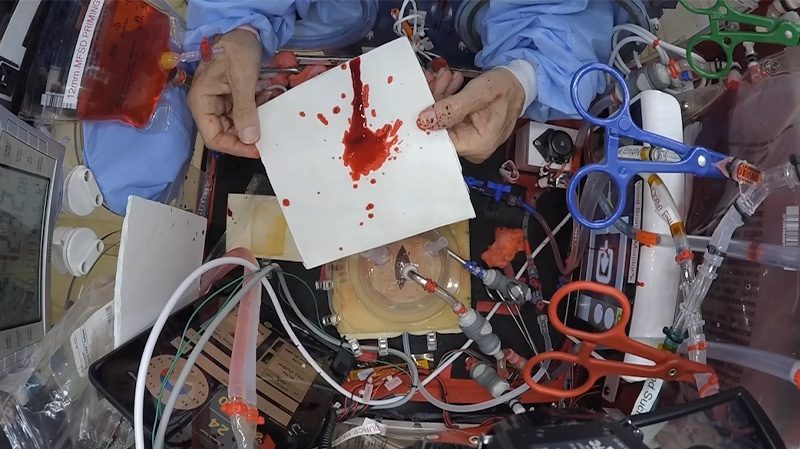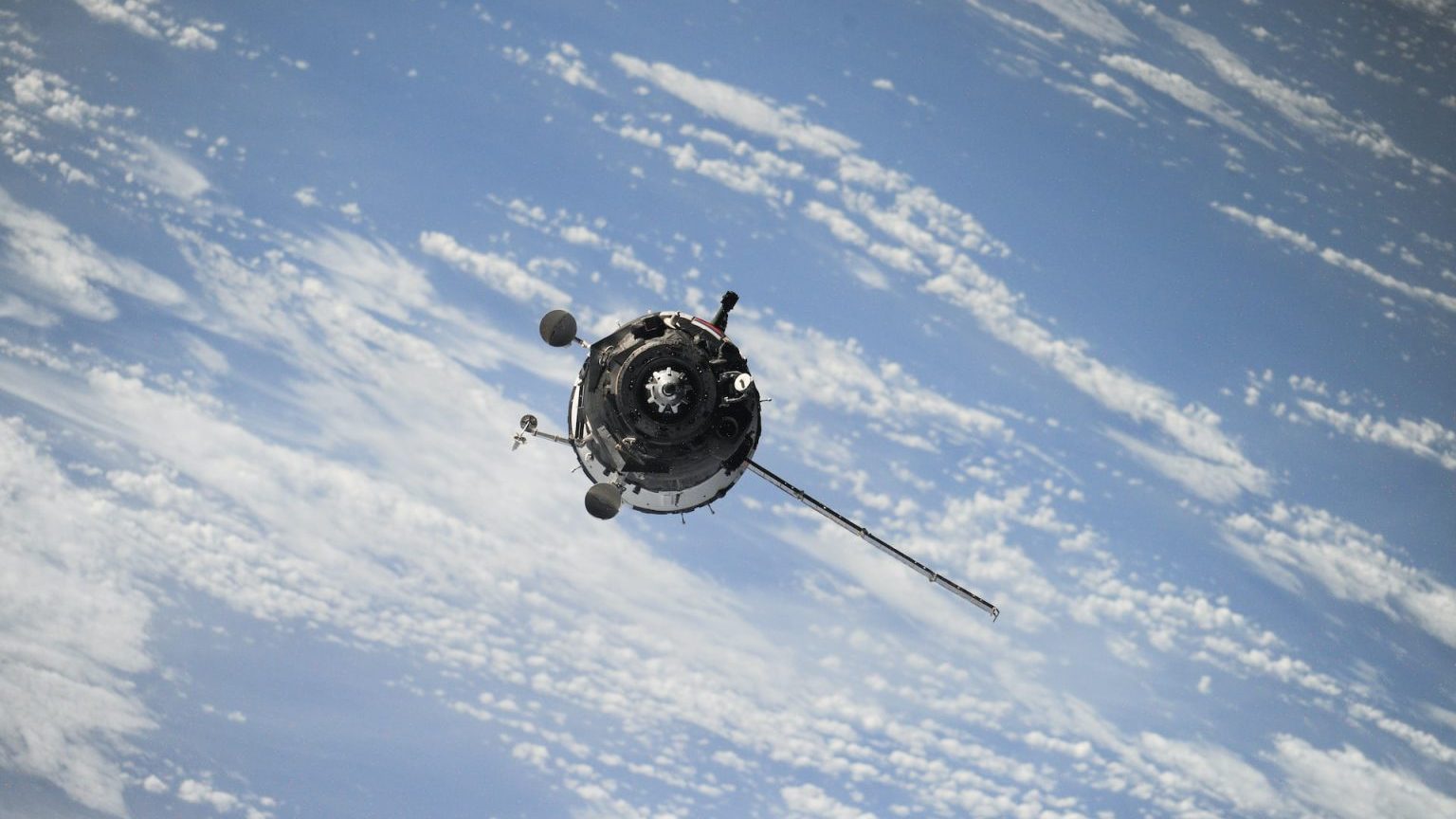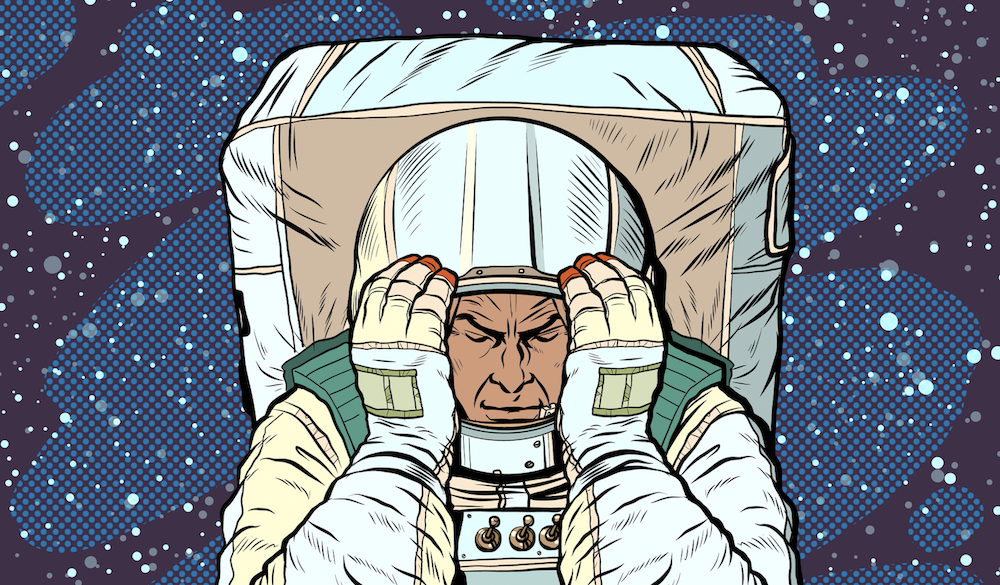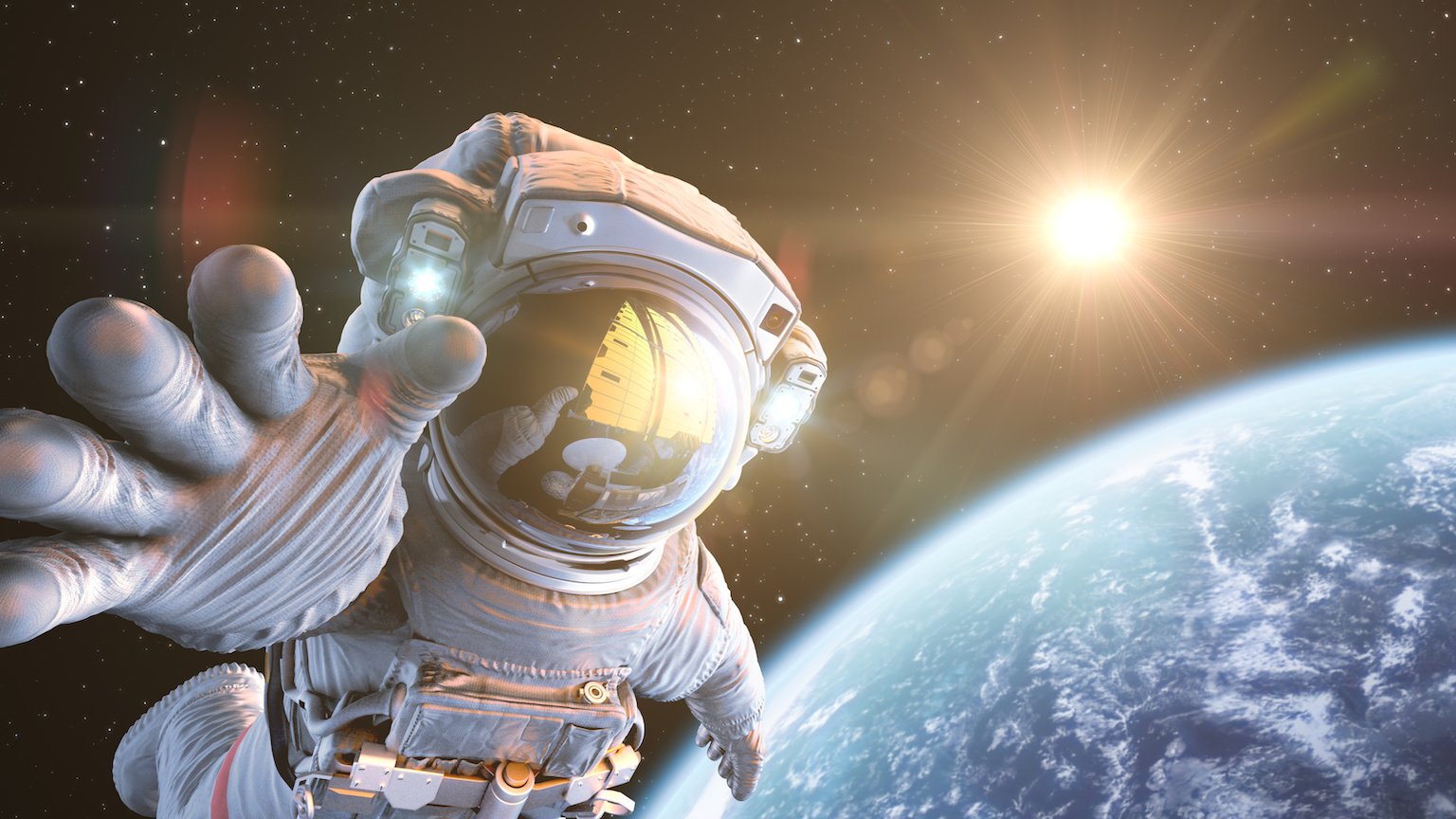The weirdest stuff we’ve sent into orbit

A huge variety of objects, many of them completely unconnected with scientific research, have been launched into orbit—and beyond—over the past 60 years: A golf ball. Pizza. Our dead.
Some of these things are sent for purely symbolic or political purposes. Others for communication: We hope that something or someone will find them and get a sense of what kind of species we are, possibly even sending a friendly greeting in reply or some of their own iconic stuff. But maybe we also wish to make the vast expanse of the universe feel a little more human and home-like—a backyard instead of an abyss.
“There’s no overarching reason why people send things into space,” says independent researcher and artist Paul Quast, formerly a graduate student at the University of Edinburgh. “There are all these different philosophies and different aspects of [human] psyche contributing to it.”
Quast compiled his own list of cultural items sent into space, including radio transmissions, advertising messages, and artifacts. (And he is at work on an updated list.) Quast says the list features “some truly fantastical and weird stuff.”
Some of the objects flown into space, including a recent consignment of dinosaur bones, have returned to Earth, increasing both their symbolic and economic value, says space archaeologist and art historian Justin Walsh of California’s Chapman University. Such “spaceflown” objects are now often found at auctions dominated by wealthy collectors.
“Space seems foreign, dangerous, and beyond the grasp of everyone,” says Walsh. But “as spaceflown objects become more common, both their symbolic and economic significance are likely to decrease.”
In any case, the craze for launching stuff into the outer reaches of the universe doesn’t seem likely to let up any time soon. So far, then, here’s a quick tour through some of the stuff we’ve sent into the beyond.
1. A hip-hop song
The first hip-hop song destined for another planet has been transmitted to Venus, according to NASA’S Jet Propulsion Laboratory. The 4-minute song—“The Rain (Supa Dupa Fly)” by Missy Elliot—was transmitted on July 12 this year by the Deep Space Network, an array of giant radio antennas that send commands to distant space probes. This was the second song transmitted by the DSN. (The first one, delivered in 2008, was the Beatles song “Across the Universe.”) The Jet Propulsion Laboratory has a sense of humor. The latest work samples the song “I Can’t Stand the Rain” recorded by Ann Peebles in 1973, but the hellish surface of Venushasn’t seen rain for billions of years—though it’s likely that it once did.
2. Human remains
The first “space burial” took place in 1992, when the cremated remains of Star Trek creator Gene Roddenberry were carried into orbit by the space shuttle Columbia and then returned to Earth. Since then, the ashes of several scientists and celebrities have been launched into space by NASA and by private space companies. In some cases, the ashes have stayed in space. The practice of rocketing such ashes into space is controversial, however, because infinitesimal particles of ash traveling at high speeds could cause damage to satellites and other spacecraft; and a recent mission to send the ashes of 70 people to the lunar surface was opposed because the moon is sacred in some belief systems. That mission was scheduled for January 2024, but the lander failed to make it to the moon due to issues with the propulsion system, and it burned up on re-entry to Earth’s atmosphere.
3. Golf balls
The Apollo 14 astronaut Alan Shepard smuggled two golf balls onto the lunar surface in 1971, where he proceeded to swing at them—one-handed, in his spacesuit—with a customized six-iron head attached to a lunar sampling tool. Shepard had hoped that the lower lunar gravity—about a sixth of Earth’s—would allow him to make record-setting shots. But he shanked the first ball into a nearby crater, and then claimed that he’d hit the second ball for “miles and miles and miles.” Expert analysis, however, using photographs taken by the Apollo 14 astronauts and images from NASA’S Lunar Reconnaissance Orbiter, revealed that the second of Shepard’s golf swings had only propelled the ball about 120 feet.
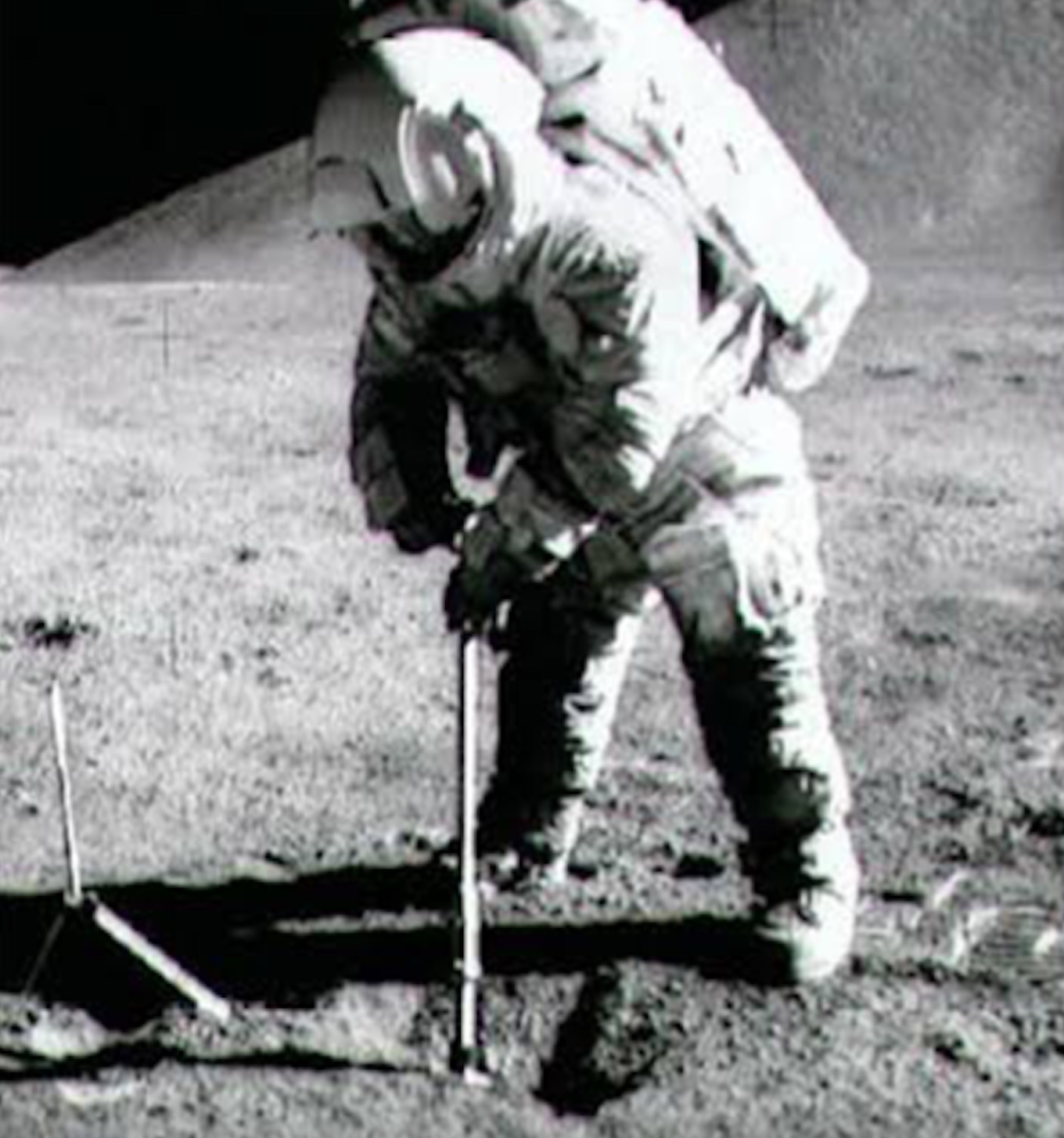
4. An electric car
The founder of SpaceX and the Tesla electric car company, Elon Musk, was behind a 2018 project to place a Tesla Roadster into orbit around the sun, along with a space-suited dummy named “Starman.” The stunt was designed to highlight the payload carrying capacity of the new Falcon Heavy rockets from SpaceX. As he began his orbits, the “Starman” dummy was “listening” on a music player to two David Bowie tracks, one in each ear: “Space Oddity” and “Is There Life on Mars?” The car’s glove box also contained a copy of the Douglas Adams novel The Hitchhiker’s Guide to the Galaxy and a digital disk of the works of the science-fiction author Isaac Asimov. “Starman” and his Tesla are still in orbit around the sun today.
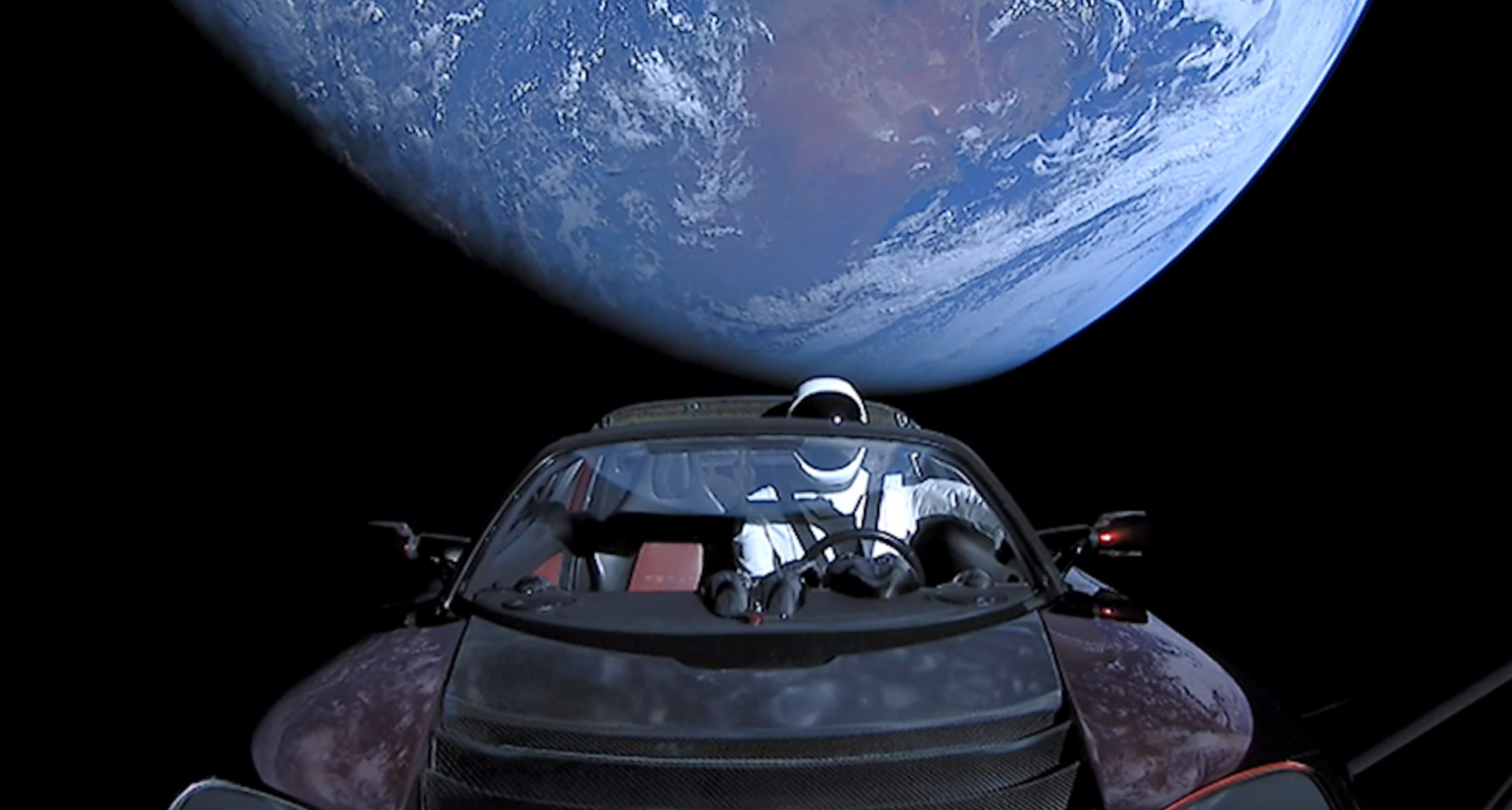
5. Jellyfish
Bags containing over 2,000 jellyfish “polyps” (baby jellyfish) flew in 1991 on the space shuttle Columbia, along with a supply of artificial seawater, to determine how the creatures would develop in microgravity. Not only did they develop normally, they thrived—and by the end of the mission nine days later, more than 60,000 juvenile jellyfish were alive in space. Once they got back to Earth, however, the space jellyfish couldn’t swim properly under normal gravity because they couldn’t tell up from down—and space scientists think humans reared in microgravity might have the same problem.
6. Tardigrades
Also known as “water bears,” microscopic tardigrades seem almost indestructible and are found in many different environments on Earth. To test their limits, Russian scientists sent some into orbit in 2007, where they were exposed to the naked vacuum and radiation of space for about 10 days. When returned to Earth, they were just fine. Tardigrades have now been used in several orbital experiments, most recently in 2021 when they were sent to the International Space Station to see how they would adapt to the conditions of prolonged space flight.
7. Dinosaur bones
The skeletal remains of these ancient animals have been launched into space at least four separate times, most recently onboard a Blue Origin rocket in 2021. In that case, they were the remains of a bird-like raptor named Dromaeosaurus, which stood about 2 feet tall at the hip. When they returned to Earth, fragments of the dinosaur bones were auctioned off for charity. It seems that the first dinosaur bone intended for space made liftoff in 1985, when a piece of vertebrae and an eggshell from a baby of the dinosaur species Maiasaura flew on the space shuttle Challenger. The bones returned to Earth about eight days later. (The Challenger shuttle wouldn’t explode until about six months later, in January 1986, on its tenth mission.)* It was followed in 1998 by a skull from the species Coelophysis, which was carried aboard the space shuttle Endeavor; and by bones from a Tyrannosaurus rex that flew on a test flight of NASA’s Orion spacecraft in 2014.
8. Pieces of the Wright Flyer
Fragments of wood and cloth from the historic Wright Flyer—the world’s first powered aircraft, which took off in 1903—were carried to the surface of the moon in 1969 by Neil Armstrong on Apollo 11, so that parts of it were on the lunar lander Eagle for the first moon landing. A 1986 flight by the space shuttle Challenger would have taken a note written by Orville Wright and fragments from the Wright Flyer into orbit, but it was lost when the shuttle exploded a little more than a minute after launch, killing all seven of its astronauts. Most recently, fabric from the Wright Flyer was carried on Ingenuity, a helicopter that landed on Mars with the Perseverance rover in 2021; Ingenuity then made 67 flights on the Red Planet—the first flights beyond Earth—while carrying a piece of the first aircraft.
9. Pizza
In a shameless marketing ploy, Pizza Hut used a resupply rocket to send a pizza to a Russian crew on the International Space Station in 2001, for a cost of around $1 million; television advertisements then showed the cosmonauts eating the pizza, alongside footage from the launch of an earlier resupply rocket that the cash-strapped Russian space agency had decorated with the Pizza Hut logo. Spending time in space deadens taste buds, so the pizza was made with extra salt and spices, and regular salami was used because the usual pepperoni would have gone moldy by the time it arrived in orbit. NASA’s astronauts on the ISS at the time were forbidden from eating the pizza, however, because of the agency’s strict rules about corporate sponsorship.
10. Red paint
In 2003, a sample of the red paint famously used on Ferrari cars—a color known as “Rosso Corsa”—was sealed in glass and launched with ESA’s Mars Express spacecraft to the Red Planet. The paint was subject to rigorous tests before the launch to determine that the sample would survive the journey, during which it reached speeds of three kilometers every second—much faster than any Earth-bound Ferrari. The paint sample was attached to the Mars Express orbiter, which still circles the planet—not on its Beagle 2 lander, which failed during its descent.
11. Human DNA sequences
A memory microchip known as the “Immortality Drive,” which contains the complete DNA sequences of a number of celebrities—including the scientist Stephen Hawking and the comedian Stephen Colbert—was carried to the International Space Station by a Soyuz spacecraft in 2008 and remains there still. The stated idea was that the scans would preserve human DNA in case a global cataclysm occurred on Earth; the microchip also contains a digitized copy of a children’s book authored by Hawking and his daughter Lucy.
12. Legos
Figures from the children’s block toy Lego have been sent into space several times; the first time seems to have been on the launch of a sounding rocket in 1980, which crossed the Kármán Line before it returned to Earth. The latest Legos to be sent into space were figurinesrepresenting the early Italian astronomer Galileo Galilei, the Roman god Jupiter, and the goddess Juno, which were on board NASA’s Juno probe when it launched in 2011. Juno entered orbit around Jupiter in 2016 and is still working while carrying its tiny plastic crew.
13. A gorilla costume
In 2016 the astronaut Scott Kelly dressed up in a smuggled gorilla suit as a prank, and wore it while he pursued other astronauts around the International Space Station. This was apparently the second gorilla suit destined for space: Astronaut Mark Kelly—Scott Kelly’s identical twin and now a U.S. Senator—smuggled the first on board a SpaceX Falcon 9 rocket for a 2015 launch, but it was destroyed when the uncrewed rocket exploded shortly after lift-off.
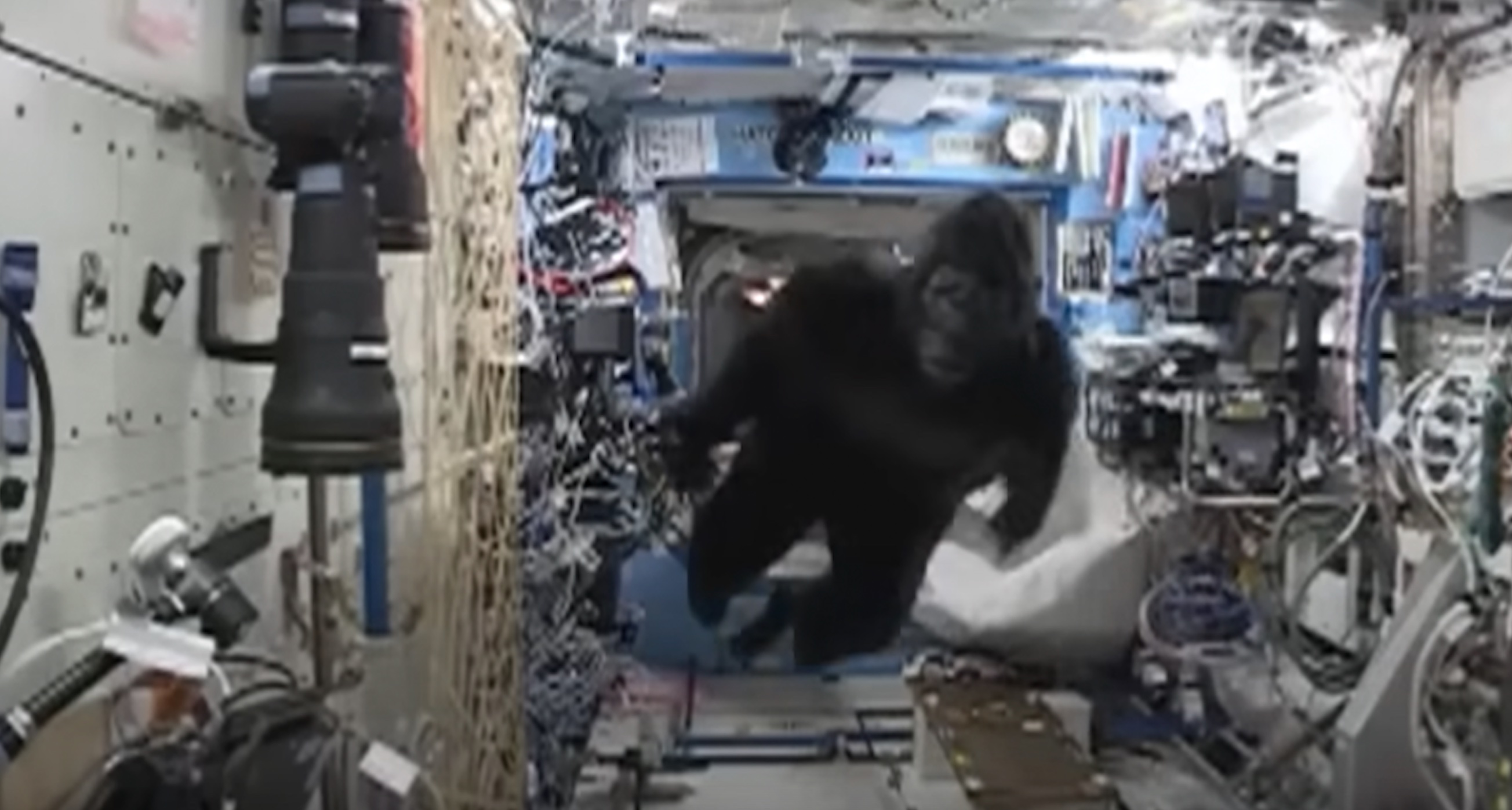
14. An Andy Warhol sketch
This artwork was part of a project by the American sculptor Forrest Myers, who asked five of his artist friends—Warhol, painters Robert Rauschenberg and David Novros, and sculptors John Chamberlain and Claes Oldenberg—to create sketches to be inscribed on a ceramic wafer that would be launched to the moon. NASA didn’t approve, however, and so Myers arranged secretly for the wafer to form one of the tiles on the Apollo 12 lander, which touched-down on the lunar surface in 1969; although it’s never been confirmed, it seems the sketches are still on the moon. Warhol later claimed that his sketch included a monogram formed from his initials, A.W—but to others it looked somewhat like a penis.
15. Slime
Packages from Nickelodeon of this gooey child’s toy were launched to the International Space Station in 2020. Its main purpose seems to have been a celebration of the cable channel’s Kid’s Choice Awards, but there were also serious reasons: Toy slime is a non-Newtonian liquid that flows differently than regular liquids like water, and astronauts wanted to observe its behavior in microgravity. It was also a popular diversion among the crew, who made several videos demonstrating the unique properties of slime in space.
This article originally appeared on Nautilus, a science and culture magazine for curious readers. Sign up for the Nautilus newsletter.

